NASSAU
Tree Roots Lifting My Driveway and Sidewalk
The reason your tree roots are lifting your pavement is due to only one thing: they’re searching for water and oxygen. It’s obvious to tell when your tree roots have broken through pavement, but it’s not always so obvious to tell when they’re about to break through.
Because this issue is so common and relatively undetectable, it’s good to know the signs, how to prevent it, and how to deal with it after the roots have already broken through.
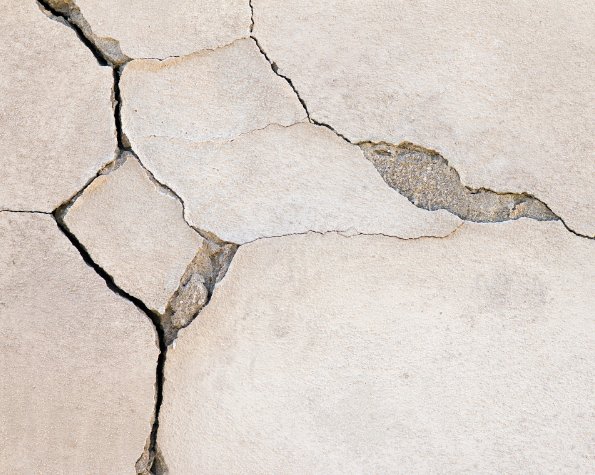
Signs Tree Roots Are or Will Damage Pavement
- Sidewalk or driveway has started to rise or tilt
- Cracks are spreading from the base of the tree outward
- Concrete or pavement splitting along the edges
- Tree roots are visible at the pavement surface
- Pavement feels spongy or unstable
- Water pools in new areas after rain
- The ground near the tree is heaving or buckling
- New cracks appear every spring
- Tree is planted within 5 feet of the pavement
- One side of the sidewalk is higher than the other
- Grass won’t grow over the lifted pavement
- The tree is a known aggressive rooter (e.g., silver maple, willow, sycamore)
- You’ve had pavement repairs done before, and the damage came back
- The tree is older than 15 years and near a hardscape
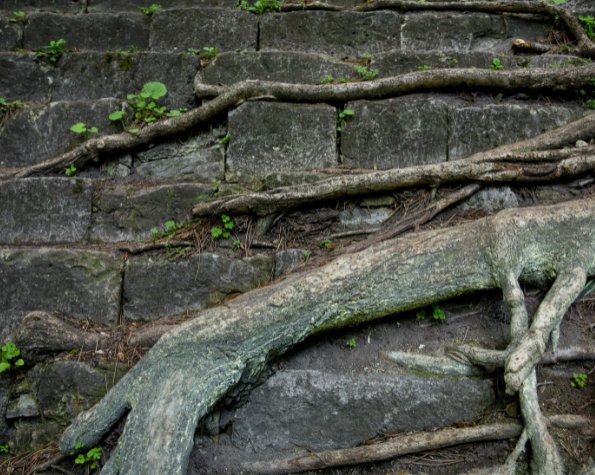
Why Tree Roots Lift Pavement
Tree roots don’t grow upward to cause damage. They grow toward oxygen, water, and nutrients, and in New York City, that often means just below the surface. When soil is compacted from construction, heavy foot traffic, or clay-heavy ground, roots can’t grow deeply.
So they spread laterally, pushing up against driveways and sidewalks. This is especially common in older neighborhoods where trees were planted too close to hardscape. The pressure builds over time, and eventually, the pavement cracks and lifts. This is not a sudden root or tree failure, it’s years of growth in a very confined space, commonly known as root heave.
Can You Fix Root Heave Without Removing the Tree?
Sometimes. If the damage is minor and the tree is healthy, there are a few options.
1. Installing a Root Barrier
A root barrier is a vertical sheet installed between the tree and the pavement. It deflects roots downward to prevent further damage. It only works if the tree is young and the roots haven’t already compromised the pavement. Once roots are under the slab, a barrier won’t help.
2. Bridging the Sidewalk
This involves creating a raised section of sidewalk that “bridges” over the roots. It both preserves the tree and eliminates the tripping hazard. It’s a good solution for public sidewalks or shared driveways, or when you want to preserve a tree you love. But it can be expensive and requires permits in many NYC towns.
3. Reinforcing with Concrete or Gravel
If you’re repaving your driveway or sidewalk that’s been cracked, you can pour thicker slabs or add a gravel layer underneath. Gravel allows water and oxygen to reach roots without encouraging upward growth. It’s a simple, low-cost prevention method for new pavement installations.
4. Using Soil Cells or Structural Soil
For new tree plantings, soil cells or structural soil provide space for roots to grow. These are common in city projects but rarely used in residential builds. They’re engineered systems installed underground that support the weight of pavement while leaving room for roots to expand downward, not sideways.
Common Causes of Root Heave
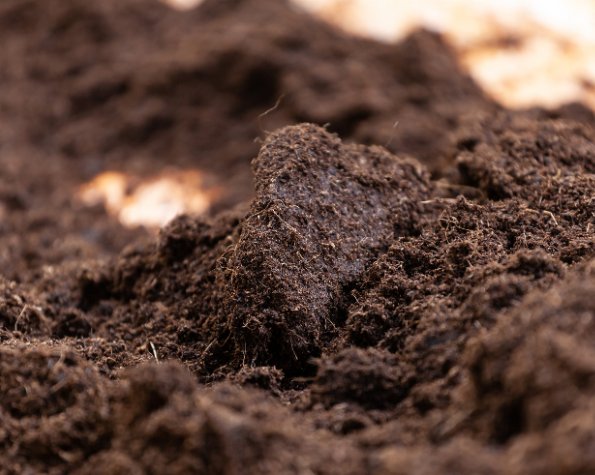
Compacted Soil and Poor Drainage
NYC’s heavy clay soil doesn’t drain well. When it’s compacted by cars, foot traffic, or construction, it becomes even harder for roots to penetrate. So they grow horizontally, right under the pavement, where they can access oxygen and moisture. This is the most common cause of root heave in urban and suburban yards in NYC.

Tree Species with Aggressive Root Systems
Some trees are just built to spread. Silver maples, willows, sycamores, and poplars are known for their aggressive surface roots. If one of these trees is planted near your driveway or sidewalk, damage is almost inevitable as the tree matures. Even oaks and ashes can cause issues if planted too close.

Improper Planting Location
Decades ago, many trees were planted without considering how large they’d eventually grow. A small sapling 10 feet from the driveway might be fine at first. But in 20 years, its roots can extend 2–3 times the width of the canopy. That’s when the pavement starts to lift. We see this often in Queens and Manhattan.
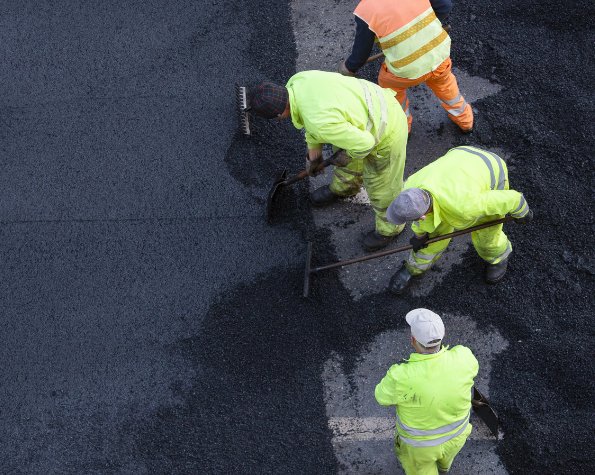
Pavement Installed Over Existing Roots
Sometimes, the damage starts with construction. A new driveway or sidewalk is poured over existing roots. The roots survive and keep growing, but now they have nowhere to go but up. The pressure builds, and eventually, the concrete cracks.
How to Prevent Root Heave
1. Plant Trees at a Safe Distance
As a rule of thumb, plant large tree, those that reach 60+ feet at maturity, at least 25 to 30 feet away from driveways and sidewalks. Medium trees (30–50 ft) should be 15–20 feet away. Small trees (15–25 ft) can be 8-10 feet away. This gives roots room to grow without threatening the hardscape.
2. Choose Trees with Non-Invasive Roots
Not all trees are aggressive. In fact, many are perfect for tight NYC yards or near pavement if you pick the right one. Consider species like Japanese maple, serviceberry, or hornbeam. They stay compact, grow slowly, and have shallow, non-invasive root systems that won’t buckle your sidewalk or driveway.
3. Use Root Barriers When Planting
If you must plant near a driveway, install a root barrier at planting time, it’s the only way to steer roots away from pavement before they become a problem. Doing it early takes half the effort and a fraction of the cost compared to repairing cracked concrete or removing a tree later because the roots took over.
4. Avoid Cutting Tree Roots
Cutting big tree roots to fix a buckled sidewalk is like pulling bricks out of a foundation to fix a crack. The tree loses its grip, gets unstable, and could tip or split during wind or rain. If the roots are already pushing up your pavement, it’s usually smarter (and safer) to take the tree out and replant something that fits the space.
Know When It’s Time for Removal
If the pavement is severely damaged, the roots are too advanced, or the tree is already declining, tree removal may be the safest, most cost-effective option. A dead or dying tree with roots under your driveway is a liability. It can fall, drop limbs, or cause further damage.
We don’t push removal because we always try to preserve trees if we can. But when it’s the best choice for safety and property protection, we will always let you know. Call us at (718) 288-8733 to determine if your tree lifting your pavement needs to be removed.
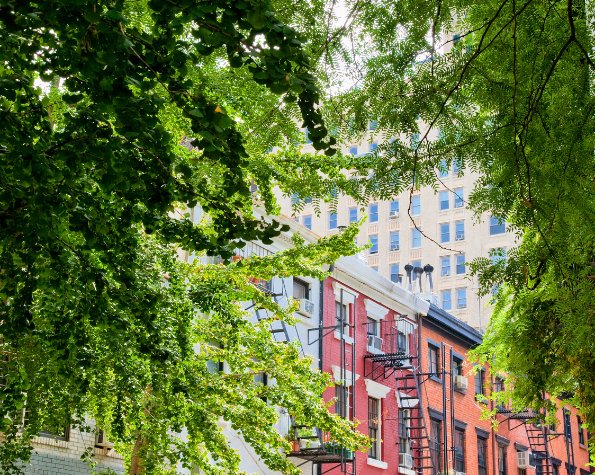
FAQs
In NYC, property owners are generally responsible for maintaining the sidewalk next to their property, even if the city owns the tree. If your tree’s roots lift the sidewalk, you could be liable for trip-and-fall accidents. Some towns have programs to help with repairs, but the responsibility often falls on the homeowner. We can help you assess the situation and recommend the safest path forward.
Sometimes, but it’s risky. Cutting roots larger than 2 inches in diameter can destabilize the tree, especially if they’re on one side. It can also open the tree to disease and decay. In most cases, cutting roots under pavement leads to long-term decline. If the damage is severe, removal is often safer than root pruning.
No. Paving over exposed roots suffocates them and accelerates decay. It also doesn’t stop the heaving, it just delays it. The roots will continue to grow and eventually push up the new surface. Better to address the root cause than to cover it up.
It depends. If the tree is healthy and the damage is minor, it might be possible to install a root barrier or bridge the pavement. But if the roots are already causing significant uplift, the tree is likely too close for its own good. In those cases, removal is often the best long-term solution.
Repair costs vary widely. Patching a small crack might cost $200–$500. Replacing a full sidewalk section can run $1,500–$3,000. Bridging or installing soil cells can cost $5,000 or more. And if you need to remove the tree, that’ll cost an additional $500 or more, depending on its size.
Most homeowners’ insurance policies don’t cover damage from tree roots unless it’s part of a sudden event like a storm or fallen tree. Gradual damage, like root heave, is typically considered routine maintenance, not a claimable loss.
Some policies may help if the tree was diseased and you didn’t know, but they likely won’t cover damage from your own healthy tree. And if the sidewalk is public, you could be held liable for trip-and-fall accidents – even if your insurance doesn’t cover the repair.
Roots that are lifting your driveway are searching for water and oxygen, the same things they’d find near a foundation. In older homes with stone, brick, or block walls, roots can exploit small cracks or joints, especially in clay-heavy NYC soil that expands and contracts. If your tree is within 10 feet of the house and you’re seeing pavement lift, it’s worth having a certified arborist inspect the site.
CONTACT GREENLEAF TODAY!
We’ve been helping NYC homeowners with sick, slow, non-leafing, and dead trees for over a decade. We’ll come to your yard, look at your tree, and tell you what’s really going on.
